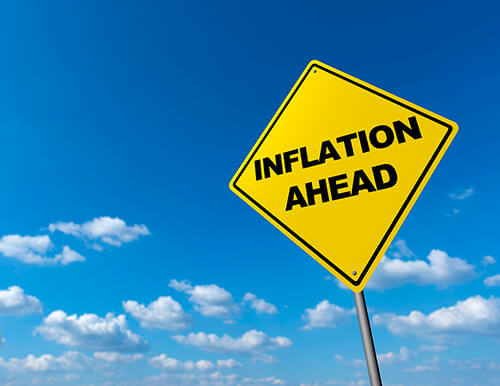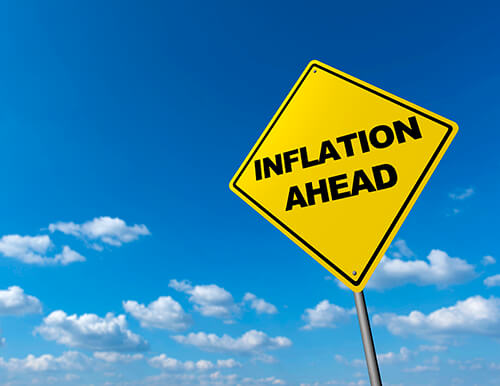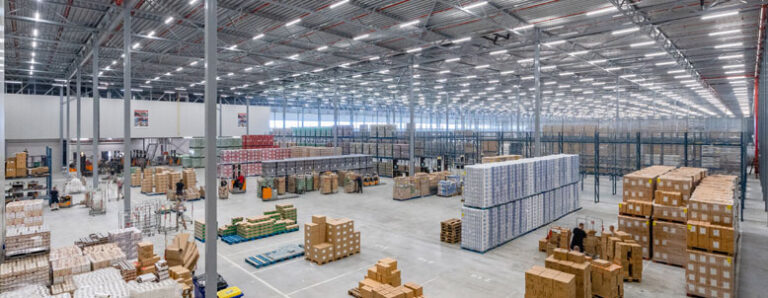-
Inflationary pressure is building
Real estate’s reputation for inflation protection will be tested in the months to come. Several different types of inflation have already climbed into view: Asset price inflation came first, followed by a spike in building material and energy costs. Next in line are labour and housing costs, and a broad range of consumer and producer prices that are all experiencing inflationary pressures in 2021 (pp. 6-13). At this stage in the re-opening of economies, inflation is still a good news story as a wide range of markets are responding to surging demand. The risks and opportunities associated with inflation are more subtle, as we describe below.
Unlike other fixed-income assets, real estate income streams typically keep up with inflation when rising prices are associated with a healthy, growing economy and real estate’s supply-side does not get too far ahead of demand.

Even before it became clear that vaccines could play a prominent role in re-opening economies, asset price appreciation accelerated last year. Stocks, bonds, and the for-sale housing markets all responded quickly. The early lift-off also included specific kinds of real estate (warehouses, data centres, life science labs, self-storage, most residential). Sectors that experienced more difficulty during the pandemic (hotels, offices, and shopping centres) are much earlier in this value recovery process. Yet, the listed sector previews strong signs of recovery in these out-of-favour sectors also [as evidenced by recent stock market performance].
The inflation protection question is timely because headline measures of price changes have been trending higher across most large economies (p. 7). One reason this trend is critical is that many Central Banks set short-term rates to meet an inflation target. Through QE bond purchase programs, they also influence long-term rates. (p. 22). Yield curves currently point to modestly higher interest rates in the not-too-distant future (p. 21).
Policymakers focus on permanent, rather than transitory, increases in inflation. The recent upturn in price pressures reflects a recovery from the massive drop in economic activity during the depths of the pandemic. Prices for a wide range of goods and services are back to par, or slightly above their pre-pandemic levels in most major economies (p. 7). As shoppers return to stores (p. 17) and restaurants (p. 16), and travellers board more flights (p. 15), prices have moved up sharply from depressed levels of a year ago. Mild inflation could persist in the short term, since it takes some time for the supply side of the economy to gear up and meet the resurgent demand. Once supply chains are operating again and bottlenecks are resolved, relative movements in producer prices and consumer prices are expected to moderate over the next few years (p. 8).
Although a few inflation measures (most notably commodities) have been trending up across the globe, price trends are highly localised. For example, labour availability in major economies varies almost as widely as vaccine rollouts, degree of economic re-opening, and measures of consumer mobility (pp. 3, 18). Similarly, metro level data shows wide variations in the intensity of house price appreciation within the same country (p. 45). The diversity of inflation pressures on labour costs and housing highlights the interplay of international, national, and local forces.
For real estate investors, another consequential pocket of rising price pressures lies in the construction industry. In the US, input material costs have risen by a quarter over the last twelve months (pp. 11-12). The data points available from Europe suggest that construction costs are also beginning to increase, albeit at a more modest pace (p. 11). For real estate investors, the rising cost of borrowing also looms as a significant factor.
Real estate’s current supply-demand and financial characteristics can mitigate rising inflation. The balance of power between landlords and tenants determines whether real estate cash flows can keep up with, or exceed, inflation. The indexation of leases (particularly common in Europe) can offset some of the impact of rising prices. Triple net leases, where tenants bear the risk for higher operating costs, also offset the risk of eroding NOI. Meanwhile, shorter leases in some property types, like residential properties, allow cashflows to adjust more rapidly to rising price levels than leases that are marked to market less frequently. Rising borrowing costs are harder to avoid. Shifting to shorter duration debt creates significant savings that must be weighed against future refinancing risks and the costs of hedging.
In sum, inflation has not been a major issue for many decades. Almost no forecasters see broad-based, double-digit inflation on the horizon. True, sharply rising construction costs pose challenges for 2021 vintage development deals. But, unlike other fixed-income assets, real estate income streams typically keep up with inflation when rising prices are associated with a healthy, growing economy and real estate’s supply-side does not get too far ahead of demand.

Oct 08, 2024
ISA Portfolio View 2024
LaSalle’s ISA Portfolio View is our guide of things to consider for institutional investors seeking to diversify portfolios with real estate.




